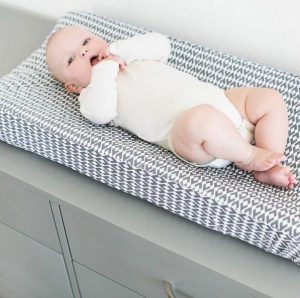
Contents
Best Baby Changing Pads of 2023
| Product | Type | Weight | Material | Colors | Dimensions W x D x H | Certification | ||
|---|---|---|---|---|---|---|---|---|
| Summer Infant 92000AZ Contoured (Editor's Choice) | Baby changing pad | 2.1 pounds | PEVA vinyl | Variety | 32.5 x 16.5 x 4 in | - | Check Price | |
| LA Baby P-3488-30QP Waterproof Contoured | Changing pad for dresser | 3 pounds | Vinyl | White | 30 x 16 x 4 in; 32 x 16 x 4 in | CPSC standards | Check Price | |
| Skip Hop Pronto Signature Changing Station | Portable changing mat for travel | 0.75 pounds | Polyester | Variety | Changing pad: 23.5 x 21.75 in, Closed: 11.75 x 4 x 8.25 in | - | Check Price | |
| SnoofyBee CHCP Portable | Clean hands diaper changing pad | 0.5 pounds | Polyester, foam | Variety | Changing pad: 27 x 13 in, Closed: 26 x 0.2 x 27 in | - | Check Price | |
| Naturepedic CH42 Organic Cotton Contoured | Organic changing pad | 2 pounds | Organic cotton, polyethylene | Beige | 16.5 x 31.5 x 4 in | Global Organic Textile Standard, GREENGUARD® Gold emissions standard and UL/GREENGUARD® Formaldehyde Free Standard | Check Price |
1. Summer Infant 92000AZ Contoured – Best Value in a Changing Pad
This 16-inch x 32-inch pad is big enough to comfortably fit your baby and the safety belt, security straps and non-skid bottom will guarantee safety, secure the pad to the changing table and prevent your little one from dangerously or unnecessarily moving around while you change him. The two-sided contours only add to the degree of safety and further make sure that your infant can’t roll out of the pad. Especially fastidious and careful parents may want contours on all four sides, though.
Vinyl That’s Easy to Clean
The pad is made of vinyl, meaning that the remains of your baby’s diaper explosions will simply side right off of it with a simple wipe. Beyond this, the vinyl is very durable, double-layered and can withstand even a washing machine spin cycle, although hand washing will almost always be sufficient to properly clean it. If that wasn’t enough, the pad is also waterproof, so if your baby suddenly decides to go as you’re changing him, there’s nothing to worry about.
The vinyl is also quilted in a effort to make the pad as comfortable for your baby as possible. Synthetic fiber pads are often notoriously not as comfortable as pads made of all-natural cotton, so in this case, the manufacturers have striven mightily to make up for this defect with quilting.
- Inexpensive
- Made of vinyl, and so does not stain and is easy to clean
- Waterproof
- Reliable safety belt and security strap
- Non-skid bottom
- Durable
- Quilted to be as soft and comfortable as vinyl can be
- There has been a bit of an unpleasant plastic smell sometimes reported with this pad
- There are contours on only two sides instead of all four
2. LA Baby P-3488-30QP Waterproof Contoured – Best Inexpensive Changing Pad for Dresser
This changing pad gives you virtually everything that you could want in a changing pad in a simple and affordable package.
Comfort, Care and Safety
This pad comes with a quilted vinyl cover that is non-toxic and non-allergenic, ensuring that even an especially sensitive baby will be comfortable and won’t be harmed in any way. The pad comes with L.A. Baby’s soft terry cover, which will increase comfort for your baby even further than the quilting. The 30-inch x 16-inch x 4-inch size also gives your infant plenty of room to lay about comfortably.
The safety belt, elevated sides, non-skid bottom and safety straps that you can fasten to your hanging table all make it so that your baby stays safe, the pad doesn’t move around needlessly and you can change your sweet little one without worrying.
The vinyl material is impressively non-absorbent, making it a breeze to clean. Even a simple wiping down will remove stains.
- Inexpensive
- Non-toxic and made of safe materials
- Soft and comfortable
- Non-absorbent and easy to clean
- Includes safety belt, non-skid bottom and safety straps to fasten the pad to a table
- Only two-sided instead of four-sided contours
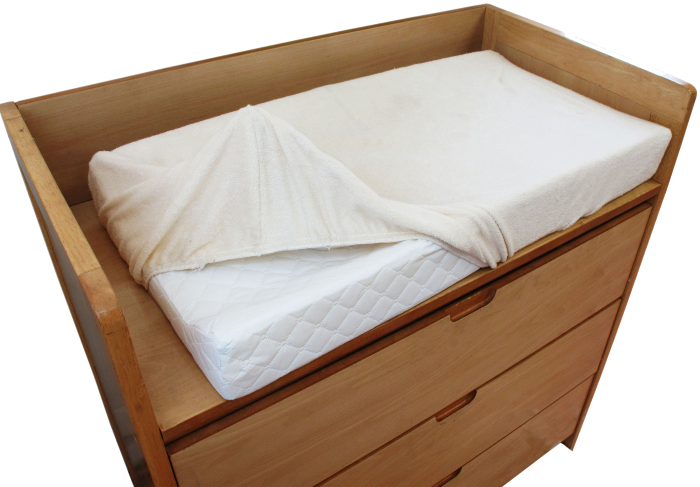
3. Skip Hop Pronto Signature Changing Station – Best Portable Changing Mat for Travel
This interesting offering from Skip Hop is more than a simple baby changing mat; it’s a full-fledged baby changing station. It has so many of the things that will make caring but struggling parents grateful.
Basic Features
First, the mat itself – which measures about 23.5 inches x 21.75 inches when opened and 11.75 inches x 4 inches when closed – is not only especially roomy for your infant, but also very foldable and portable. You can fold it up and put it into your bag, or fold it up and attach it to your wrist with the wrist strap to have it always on hand.
The mat is very easy to clean – just a good wipe will do – and its sides can be closed around your baby to keep him from rolling or flailing away. There’s also a little pillow included in the mat to keep your baby comfortable and and case in which you can easily store any wipes that you’ll need.
There are also two pockets included: one larger mech pocket in which you can store up to four diapers as well as a few other things your baby may need, and a smaller front zippered pocket in which you cell phone or other odds and ends.
- Easy to clean
- Large and comfortable
- Portable
- Includes a case in which to carry wipes
- Does not come with straps to attach the mat to a changing table
4. SnoofyBee CHCP Portable – Best Diaper Changing Pad to Keep Your Baby Clean
Keeping Your Baby’s Hands Clean
Infants like to flail around a lot. They’re not going to lay still just because you happen to be changing them, and so with this, there comes the risk that they’ll end up grabbing at their own poop and getting their hands dirty – another misfortune that no caregiver wants. Thankfully, SnoofyBee has anticipated this problem and come up with simple but creative solution for it.
This changing pad’s sides fold up and create a barrier between your baby’s hands and his lower body. You can also attach some toys the barrier to keep your baby distracted and entertained as you do the work of changing him.
General Features
This changing mat is made of polyester and so is extremely easy to wipe down and clean. The polyester material also makes it waterproof, further adding to the ease of cleaning. Unlike many changing pads, it’s fully foldable and so is maximally portable and convenient to carry around. Further, it’s got a 1/4-inch thick foam pillow at the head of it so that your baby can have a place on which to rest his head and stay comfortable.
The changing surface measures 27 inches x 13 inches, which gives plenty of room not only for newborns, but even for children as old as 2. When you lay the barrier flat, the width goes up to 26 inches. When the barrier is clipped closed, the changing mat measures 13 inches x 7 inches x 3 inches. The barrier can fit children with a lower chest circumference of up to 22 inches. It’s even got a convenient compartment in which to store diapers.
- Creative and useful way to keep your baby’s hands clean during changing
- You can attach toys to the barrier for your infant to play with
- Easy to clean
- Highly portable
- Suitable for children up to 2 years old
- Does not come with straps meant to secure the pad to a changing table
5. Naturepedic CH42 Organic Cotton Contoured – Best Organic Cotton Changing Pad
Organically Made
Despite this pad’s high price, it’s perfect for any infant who happens to be particularly sensitive. The makers of this pad went out of their way to construct it entirely without the use of any potentially hazardous chemicals, like formaldehyde, latex, PVC or phthalates. There were no dyes, herbicides, pesticides bleaches or fertilizers of any kind added to the cotton filling or used to make it. The polyethylene sides are designed specifically not to aggravate any possible allergies. The entire pad is totally organically made.
Comfortable Cotton
This pad’s filling and fabric are both made of cotton, so it’s incredibly soft and meant to provide your baby with the greatest amount of comfort possible.
The four-sided design and safety belt are meant to insure that your little one stays put as you change him and doesn’t roll or fall out anywhere. It measures at approximately 16.5 inches x 31.5 inches x 4 inches, giving your baby plenty of room to comfortably lay around. Also, it comes with snap screws mean to tightly secure the pad to a changing table.
The 100% cotton makeup of this pad does leave it a bit vulnerable to deep and persistent stains, but that’s nothing that a thorough was can’t fix. And for this level of comfort and care put it to avoid exposing the baby to any potentially harmful chemicals, it’s worth the price.
- Luxuriously soft and comfortable cotton fabric and filling
- Made with no harmful dyes or chemicals or chemicals of any kind
- Safety belt, snap screws and four-sided design provide maximum security for your baby
- Expensive
- Requires thorough washing because of vulnerability to deep stains
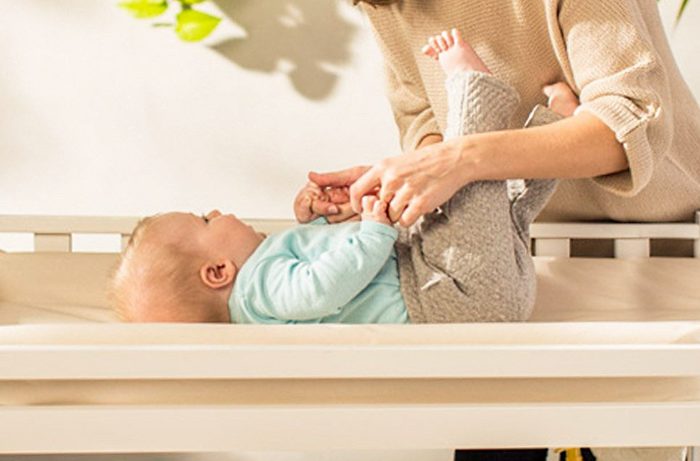
Buyer’s Guide
Now that we’ve discussed a few changing pads and their features, there’s still some general information about changing pads that we think it’s worthwhile to impart and to arm you with as you go around shopping. We all know that you want what’s best for your baby, so we would like to tell you a few important and practical things about changing pads and answer a few common questions about them. For this purpose, we’ve put together the buyer’s guide that follows.
Why Should You Get a Changing Pad?
If you’re at home and your baby has an accident, things will probably be fine. After all, while at home, you’ll have what you need to handle any problem that comes up and make sure that your baby is alright. But your baby might also need to poop or pee while you’re out in public, and babies are not exactly known for holding back such urges until they’ve been brought back home. A changing pad is extremely helpful for when it’s necessary to change your baby while out shopping, at a restaurant, visiting relatives or at any other place away from home.
The proprietors of many stores, shopping malls, gas stations and other such establishments know this and will often have some kind of changing table or other area set aside for the purpose to which mothers can go with their babies. But as well-intentioned as such people might be for creating these areas, those places are often not in the best of shape. Frighteningly often, they’re simply filthy and look like they haven’t been adequately cleaned since the last baby blasted poop everywhere. No parents want to expose their infants to that sort of filth if they can help it.
Also, changing pads can do more than just protect your baby. Sometimes, they can protect your belongings from your baby. It’s surely better to have your baby secured in a changing pad and have him unleash poop all over it than all over any of your belongings.
So, to put it simply, if you have to take care of a baby, you should have a changing pad on hand because babies might want to poop or pee anywhere, because many of the places where you can change a baby in public are unsanitary, and because changing pads will keep a baby secure, comfortable and away from any outside dirt or filth as you change them. They can also protect your things from your baby and save you the trouble of needing to wash them.
Some General Qualities to Look For in a Changing Pad
Here are some general features that every good changing pad should have:
- Fit: This is meant in two senses: the pad should both fit your baby and give him a fair amount of comfort as he lays there, and the pad should the changing table or other flat surface that you’ve picked out on which to change your baby, whether that surface is attached to the baby’s crib or is separate from it.
- Portability: A changing pad should be easy to fold, carry and store in a purse or some other kind of pack or carrying bag. After all, you never know when you’re baby will have an emergency, so you should be prepared at all times and in all places.
- Straps: Straps are useful for securing your pad to a changing table and keeping it from sliding around. Of course, you’re going to need this to be able to keep everything steady and make the task of changing your baby run more smoothly, especially if you have a baby that likes to kick and move around. Some changing tables come with straps attached, but there are also changing pads that come with straps of their own for this purpose.
- Non-skid Bottoms: These are also intended to keep the pad from sliding around the changing table as you help your little one with his accident. A bottom surface that can create some friction with the changing table will keep the pad from moving in place, even if you have a baby that’s a little energetic during changing.
- Safety Belts: A safety belt is another useful feature to have if you know that your baby is particularly vigorous. Unlike the last two features, which are meant to keep the pad itself in place, this one is meant to keep your baby in place. With a belt to secure the baby safely in place, you don’t have to worry about turning your head or taking your eyes off of him for a second to grab something because you can be assured that he’ll be exactly where you left him.
- Waterproofing: Babies can be unpredictable and decide to add to the mess they’ve already made by peeing all over the pad as you try to change them. Since this is obviously possible, you simply need to ask yourself: Would I rather have a waterproof changing pad, or one that would soak in the pee and have to be washed out later? Washing changing pads is entirely possible, of course – sometimes, it’s obviously necessary – but it’s another thing to worry about in a situation where you’ve probably already got your hands full. A waterproof changing pad will simplify things and leave you with less work to do.
Changing Pad Materials: Cotton vs. Synthetic
Changing pads come made of either cotton or some type of synthetic fabric. Each of the two materials has its strengths and drawbacks, so deciding which sort to get is really a personal decision that will vary depending on your personal convenience and the needs of your baby.
Cotton is generally more comfortable and less heat-absorbent than synthetics fabrics, so if you want your baby to be comfortable and not risk having him sweat needlessly as he’s laying on the pad, cotton might be the way to go.
On the other hand, synthetic fabrics are generally stronger than cotton, giving them a longer self life and making them better-suited for machine washing. Synthetic fabrics are also much less absorbent than cotton, which means you won’t have to deal with deep and hard-to-wash-out pee stains that your baby left behind. Synthetic changing pads are generally easier to was than cotton ones.
How to Use a Changing Pad Properly
If you’re a first-time parent or are otherwise new to changing pads, here’s the basic procedure to follow when using them:
 Before anything, make sure that the pad itself is clean.
Before anything, make sure that the pad itself is clean.- Then, fasten the pad to the surface on which you’re going to be changing your baby. You can usually do this with the straps or with something similar. You might also want to test it a bit after you’ve fastened it to make sure that it won’t be loose.
- If you plan to use any covers in addition to the pad, make sure that they’ve been properly washed and attach them as needed.
- Adjust your safety belt properly.
- If you’re not using a pad with a non-skid bottom, place some kind of mat on the surface underneath the pad to be absolutely sure that the pad won’t slide around.
- Just to be safe, canvass the area and make sure that there’s nothing around that can endanger your baby, or that he might be able to grab and hot himself with.
- Also, make sure that there’s some convenient nearby place where you can lay down your belongings while you change your baby – preferably somewhere out of the baby’s reach. After all, your hands are going to be occupied here and you don’t want to be needlessly cluttered up.
- Lay your baby down gently onto the pad and strap him in with the safety belt. Keep the belt fastened until you’ve completely finished changing him.
- Change your baby and dispose of the old diaper somewhere.
- Pack up your things, undo the safety belt, pick your baby back up and return him to his stroller or the other means by which you were carrying him (or, if you were simply carrying your baby, make sure you’ve safely gotten a hold of him).
How to Wash Changing Pads
When you buy a changing pad, it will include a set of instructions clearly explaining how best to wash that particular pad. For detailed and specific cleaning instructions, you should consult those.
Still, there are a few things that we can say, in a very general sense, about how best to clean changing pads. Cleaning procedures will differ based on the material of which the pad is made, so here is some basic information on how to dost effectively clean your changing pads, arranged by type of material:
- Plastic Pads: Since these pads are covered in plastic, any poop that your baby might leave on them will easily slide off if you just wipe them down with water. If you want to make extra sure that the pad is clean, you can wipe it down with a little detergent. Carrying a spray bottle around with you in a diaper caddy or similar sort of bag will make it easier to do this on-the-go if you need to.
- Foam Pads: If you have a pad made of cotton, polyester, or some other soft, puffy or foamy material, your washing machine should be able to take care of cleaning them correctly. Be warned, though, that if you also have a mat that you like to place under the pad that is made of the same sort of material, washing the mat in the washing machine is probably not a good idea. The violence of a washing machine’s spin cycle will probably tear the mat, so you should wipe it down with a wet cloth instead and simply leave it out to dry.
- Portable Pads: These are usually small and made of some sort of synthetic material, meaning that you should avoid putting them in the washing machine, as this may tear or destroy them. Putting them in a drier under any kind of high-temperature drying cycle is also a bad idea. Instead, just wipe them down with a wet cloth – maybe using a little bit of bleach to get rid of any of the more stubborn stains – and air dry them.
- Pads With Soft Filling: Pads like this are very soft and comfortable for your baby, but stains tend to seem into them quite deeply and have a nasty habit of persistently sticking around. To handle this problem, try adding some white vinegar, bleach or stain remover to clean things properly. Beyond that, both hand washing and machine washing can be adequate for pads of this type.
Conclusion
Babies are handful to take of and everyone needs all the help they can get to do it. We, of course, are happy to help however we can, and since we know that changing a baby can be among the most difficult of a new parent’s responsibilities, we’ve tried to ease the burden a bit by arming you with some useful knowledge. Everyone knows how fragile babies can be and no one wants to mess up any aspect of caring for them, so we’ve attempted to inform you a bit about changing pads and get you just that much better prepared for the challenges you’ll face.
We’ve tried to give you not only a list and a discussion of five of the best changing pads for your baby that you’re likely to find for sale today, but also a few useful tips and pointers on the value of changing pads, what features to keep a lookout for when shopping for them, and how to use and clean them properly.
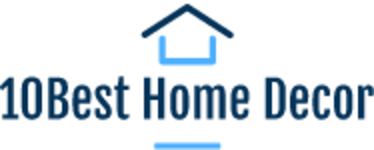
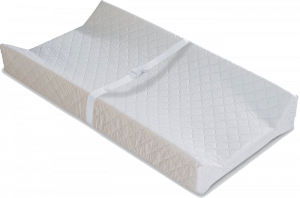
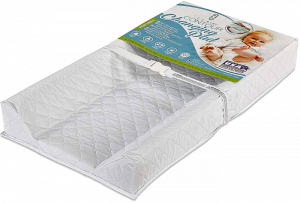
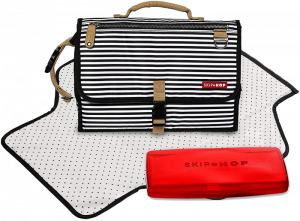
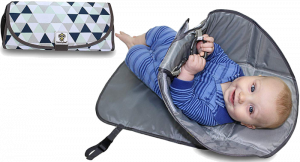
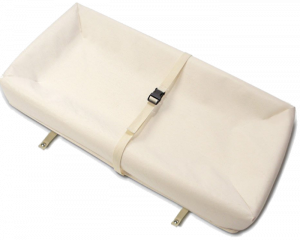
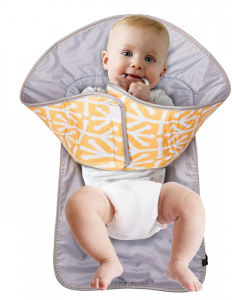 Before anything, make sure that the pad itself is clean.
Before anything, make sure that the pad itself is clean.





